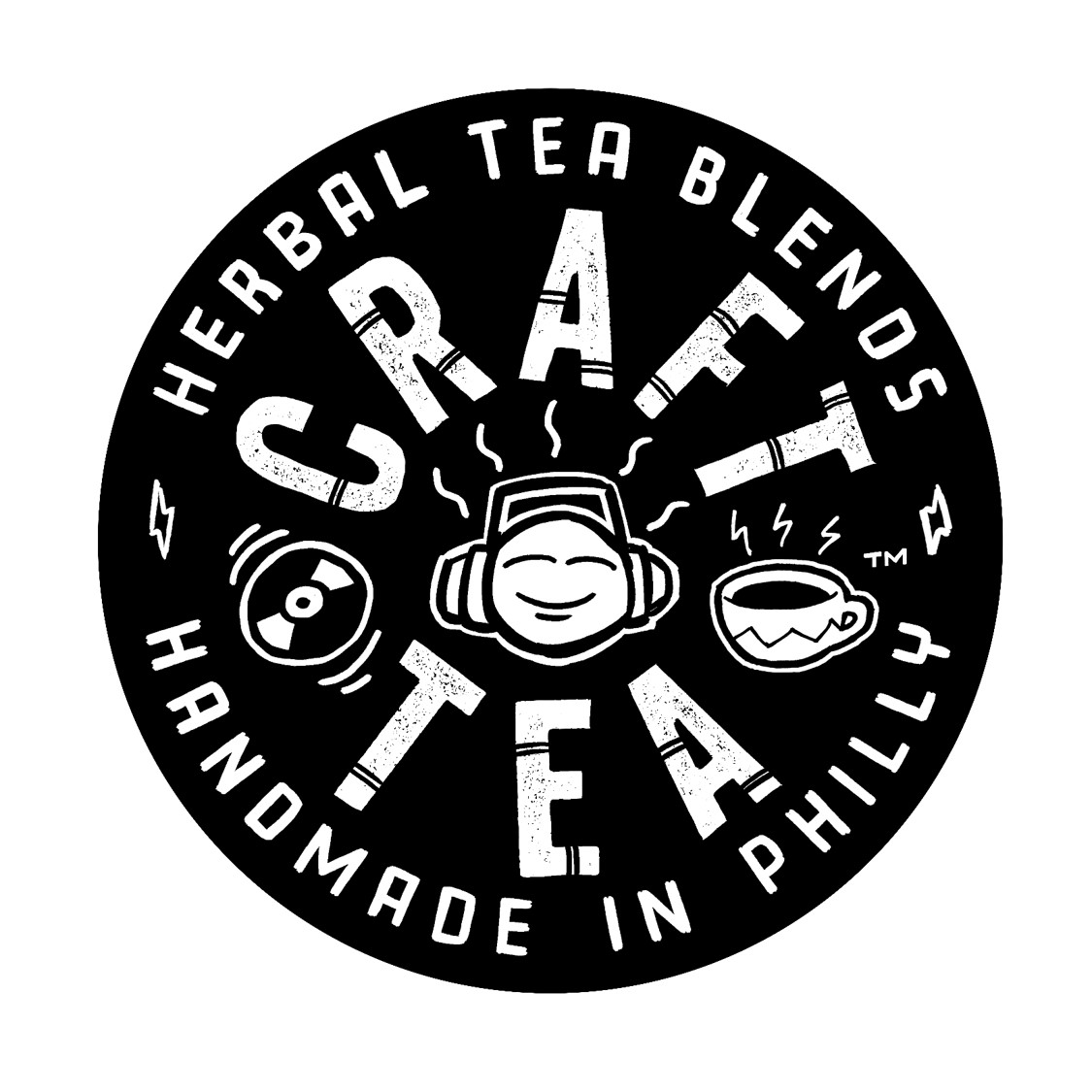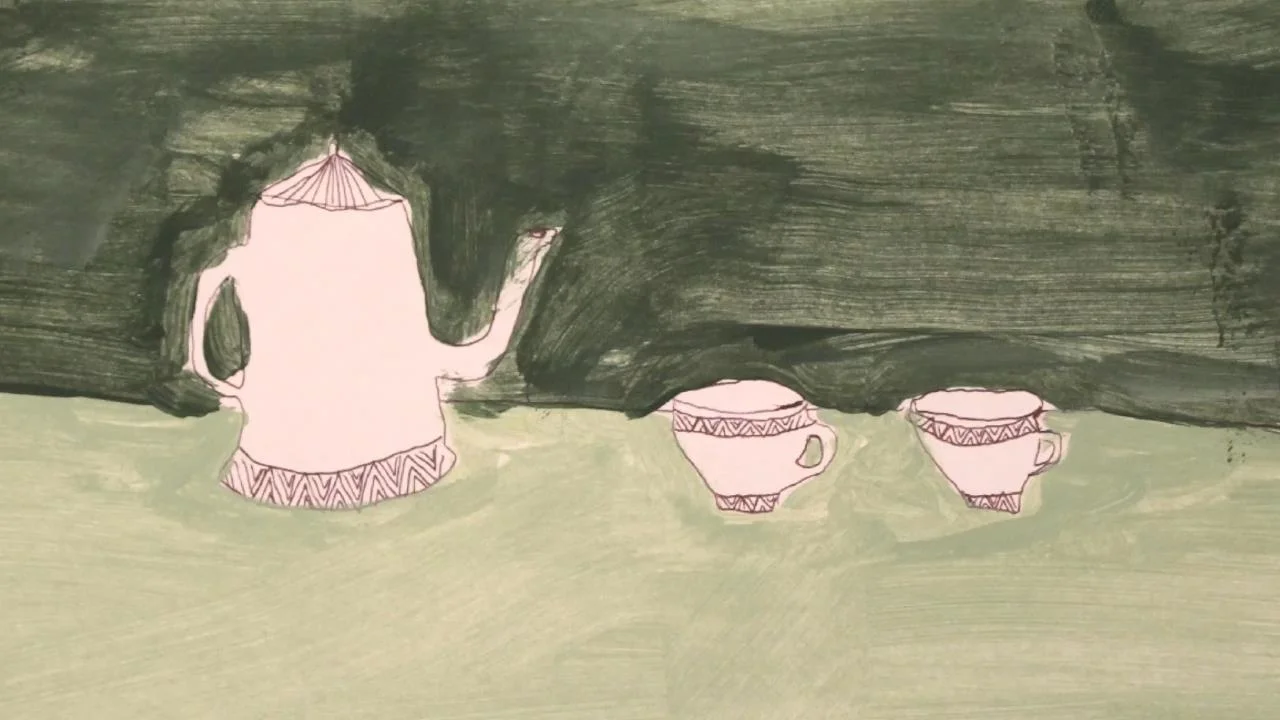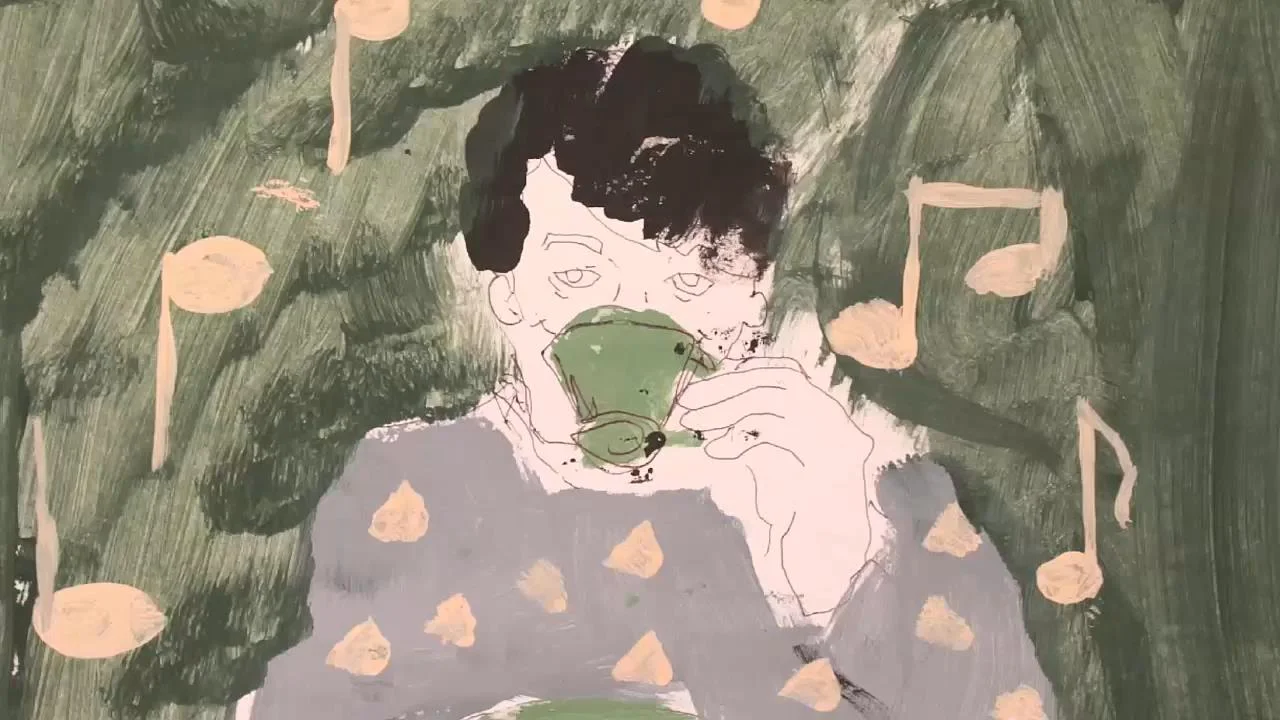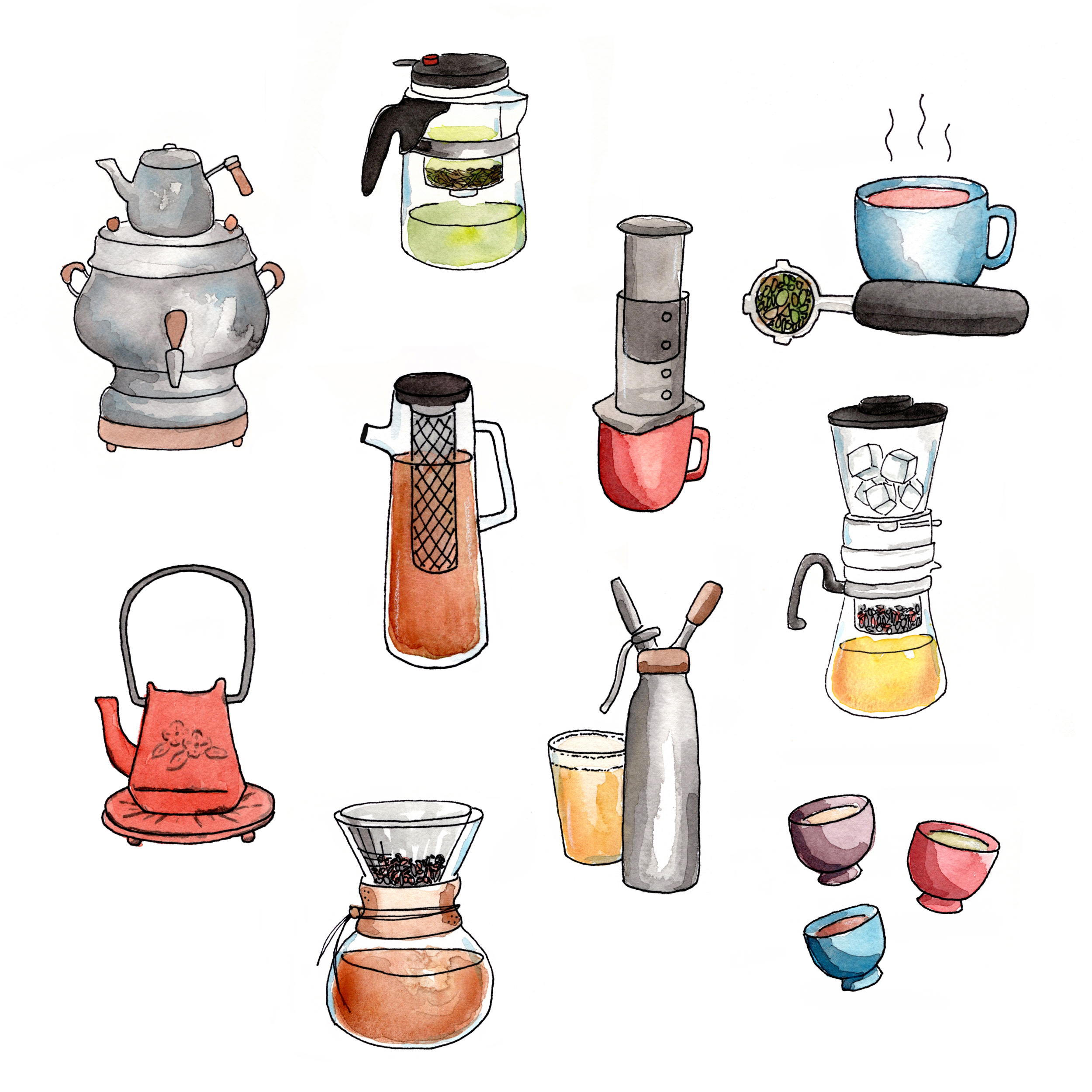Herbal Tea Basics
For herbals use 1.5 tsp (½ tbsp.) of tea per 1 cup (8 oz) of water. Too strong? 1 tsp. Too weak? 2 tsp. If you’re brewing something from the Farm to Kettle collection (except Heavy Thinker, Walt’s Wild Ride, and The Tea Phanatic), I recommend using twice the tea to water (1 tbsp per 8 oz).
You’ll want a strainer for the least amount of mess. Use metal / mesh, rather than plastic. I like basket strainers more than the tea ball strainers, because they’re easier to clean and the tea balls break after a while.
Tea is mostly water, so use whatever kind of water you enjoy drinking the most. I prefer anything fresh & filtered. If you’re using a kettle, pour out any old water first as re-boiled water tastes flat.
Heat your teapot (and / or cup) with warm water before you brew. This preps the pot for warm temperatures and keeps the drink warmer as a result.
Brew in a tea pot, or cover with a small plate if you’re using a mug. Conceal the heat as much as possible, especially herbals with long brew times. For full enjoyment, I recommend a small tea pot (ideally a 16 oz cast iron).
I’m a big proponent of drinking out of small cups (2-3 oz cups, i.e. espresso cups), preferably bone china. The flavor doesn’t get lost & the tea reaches a comfortable temperature much faster.
Every blend at Craft Tea is made to be enjoyed without additional flavors. That being said, if you need to sweeten, please do so with honey as sugar harms the medicinal properties of the herbs.
Temperature and Brew times for tea
Use a thermometer or electric kettle to accurately brew the tea. Brewing for too long or with temperature too hot will result in a bitter and unpleasant cup. This is definitely more important for tea leaf vs herbals. The temperature will vary depend on the specific tea you’re brewing but in general you can use the following guide:
Black - 195° / 2 min
White - 185° / 4 min
Green - 175° / 2 min
Oolong - 185° / 2 min
Herbal - 200° / 20 min
For herbals, I tend to stick around the 200° mark for most blends, however will go full boil (212°) if brewing roots. Kava is a little different in that it has active components (called “kavalactones”) that go live at a certain temperature, but will burn off if the water is too hot. If you are brewing kava by itself, try 140° to get the best effects. However, since kava is only used in blends at Craft Tea, I would recommend somewhere in the middle 175° to accommodate for the other herbs.
In general, brewing tea for longer will not make it stronger (adding more tea will). However, long brew times are recommended for a good cup of herbal tea. 20 minute is a good target to aim for. If that seems excessive, try to make it to at least 10 minutes. If not, 5 minutes is my minimum for herbal infusions.
The good thing with tea leaf (as opposed to herbal) is you can re-steep for multiple infusions. In general, whites and oolongs will result in the most infusions.
old school vs cold brew
In my opinion, there’s two main ways to brew tea: old school & cold brew. In old school, you’re infusing the tea in hot water – something that’s been done for thousands of years. Alternatively, I’ve grown to become a big fan of cold brew, especially during warm months. Opposed to “iced tea” which involves brewing hot tea, then pouring it over iced (imo, a slightly watered down version), cold brew slowly pulls out that flavor, leading to a strong, bold taste that is both sweet & smooth.
To make a cold brew:
1. Combine 1.5-2 tsp of loose herbs (or 1 tbsp if using tea leaf) per 8 oz of filtered, room temperature water into a container (i.e., a mason jar), and place in a refrigerator for some time. Make sure to rinse the dry loose leaf tea with hot water (160°) first!
2. Ideally, leave in the fridge overnight. At a minimum, I recommend at least 3 hours for extraction, and 8 hours is a good mark for a decent batch. Just be mindful leaving it in for too long may bring out too much of one element (i.e., ginger).
3. When it’s done steeping, strain it and put back in the fridge what you don’t drink. The fresher the better, but I try to drink cold brews within 3 days.
Unique Ways to Brew Tea
Most of the time I’ll brew tea in a cast iron tea pot and drink it out of a small cup. However, sometimes I like to spruce it a bit for special occasions. Here are some neat ways you can brew tea:
Small Glass Infuser
This is great if you want the best bang for your buck on teas that benefit from multiple infusions (notably pu’erhs, oolongs, and whites). The plus side of this contraption is you don’t need a lot of leaves, since you can only brew 6 oz at a time. Alternatively, it acts as a modernized gong fu cha set, making it super easy to brew quick infusions multiple times. Recommended for teas like The Ghostwriter, Heavy Thinker, Riff City, and Breezy Baby.
Samovar
Samovar’s are great for parties and special gatherings. It’s built in a way that allows you to make an excellent concentrate, that each individual can then water down to their own preference. The tea pot remains heated, which ensures the tea stays fresh for hours. Great option for black teas, such as Baked at the Lake and The Tea Phanatic.
Espresso
For a truly unique experience, try brewing tea as an espresso shot. Even though it only steeps in hot water for a few seconds, it surprisingly tastes as if it brewed for minutes. Good for a rich, velvety texture. I’ve found caffeinated teas to be too bitter using this method, so typically stick to light herbals. Strong Mint and Giddy Diddy are two good options for this.
Chemex
Clean and clear. Aesthetically pleasing and perfect for scientific types. Excellent choice for simple teas (think single origin teas) with deep character. Blockbuster Bob, Riff City, and The Tea Phanatic are my favorites in the Chemex.
Aeropress
Smooth cup with a good body. Less acidic as a result of the lower brew temperature. Good for campers or those making a good, strong cup at work. The filter is very effective, making this a good choice for those who like kava or sage, but do not want any particles in their cup. Sore Before, Campfire Companion, and High Fideli-Tea are my favorites in the Aeropress. For tea you’ll need to brew it using the inverted method, otherwise the water will immediately pass through the filter.
Slow Drip Cold Brew
Bold, smooth, and clear. Lots of flavor. Less acidic because of the cold water. Good for bright, fruity teas like Invasion of the Red Pandas or Walt’s Wild Ride.
Nitro Cold Brew Tea
If you want to get super experimental, try nitro tea! You will need some pricey equipment, but it is a real treat to watch and drink. Herbals that are more on the earthy side aren’t necessarily great nitros, so I typically go for caffeinated teas or ones with cool colors, which make for a great cascade of bubbles. Baked at the Lake, Cosmic Trip, and High Fideli-Tea are excellent choices!
Alternative Tea Brewing Methods artwork by Kate Otte






